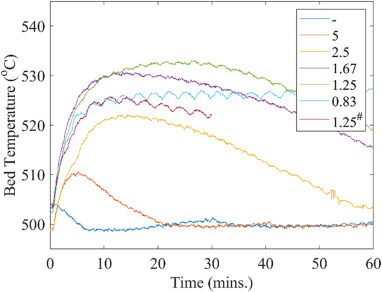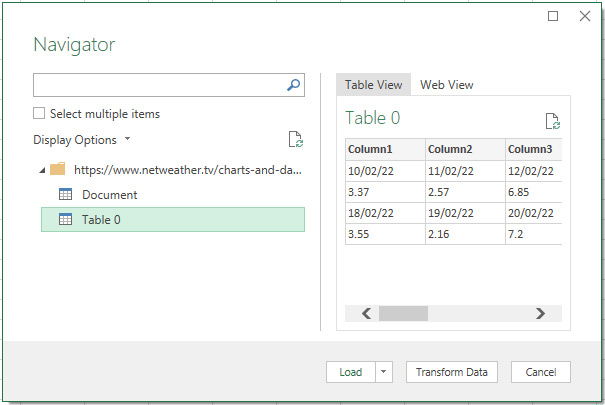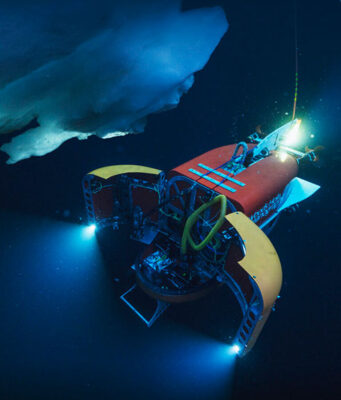Monitor - ISSN 1472-0221
The Newsletter for Data Acquisition and Control
Issue 279 February 2022
Welcome to Monitor, thanks for subscribing. This month, how data acquisition kit helps remove CO2 from bio-fuels.
You can download a pdf copy of the newsletter here.
Contents
* Removing CO2 from Bio-Fuels
* Your Data Acquisition Questions Answered: Live Data from Web into Excel
* Data Acquisition News Round-Up
Removing CO2 from Bio-Fuels
Web link: https://www.windmill.co.uk/removing-co2-biofuels.html
Researchers in the Netherlands are leading the way in removing CO2 from bio-fuels, and using our Microlink data acquisition system to help them.
Climate change and growing concern about fluctuating oil prices are leading to increasing interest in using plants to produce liquid fuels and chemicals. Fast pyrolysis is often used to produce bio-fuel - rapidly heating the plant biomass in the absence of oxygen. The vapours formed are condensed to obtain the liquid product.
The problem with the process is that the fuel yielded contains CO2 and unstable oxygen compounds. One solution involves adding a catalyst to the process, and the researchers are investigating dolomite (magnesium calcium carbonate) as such a catalyst.
The researchers placed dried samples of beechwood into a reactor. This was contained within two verticlly stacked ovens. The Windmill Microlink 752-RTD monitored temperatures from K-type thermocouples within the ovens, reactor and gas outlet.

The Microlink 752-RTD measures temperature from resistance temperature devices, but with the addition of Microlink 594 isothermal box can also monitor thermocouples. Furthermore, it can switch digital outputs, monitor digital inputs, count events, control current or voltage outputs, monitor other voltage inputs and with extra equipment monitor strain gauge bridges. The Windmill software makes it very easy to switch between, or combine, uses.
Initially the scientists conducted a series of trials to optimise conditions. They then investigated the influence of dolomite in in-situ deoxygenation and CO2 capture. The results showed that dolomite allowed CO2-free and moderately deoxygenated bio-oil to be simultaneously produced.
Further Reading
Microlink 752-RTD: Resistance Temperature Measurement, Digital I/O, Counting and Analogue Output
Prabhakara, Bramer, Brem Role of dolomite as an in-situ CO2 sorbent and deoxygenation catalyst in fast pyrolysis of beechwood in a bench scale fluidized bed reactor, Fuel Processing Technology, Volume 224, 2021, 107029, https://doi.org/10.1016/j.fuproc.2021.107029
Your Data Acquisition Questions Answered: Live Data from Web into Excel
Question
I've seen your page on importing live data from the web into Excel, but I'm using Excel 2016. How do I do it?
Answer
- Open a worksheet in Excel.
- From the Data menu, in the Get & Transform Data section, choose From Web
- Fill in the URL of the web page that contains your desired data table. Excel will connect.
- Choose a table and select Load.

Importing live data into Excel - Choose how often you want to refresh the data. From the Data menu select Queries & Connections. Right-click your table and select Properties then choose how often to refresh.
Further Reading
Excel Tips and Tricks for Data Acquisition
https://www.windmill.co.uk/excel/excel-tips.html
DAQ News Round-up
Welcome to our round-up of the data acquisition and control news. If you would like to receive more timely DAQ news updates then follow us on Twitter - @DataAcquisition - or grab our rss feed.
Hong Kong's car pollution sensors help it clean its air in world first
Hong Kong has improved its air quality by using roadside sensors to detect vehicles with the dirtiest fumes and forcing owners to get them fixed.
Source: New Scientist
https://www.newscientist.com
Testing seismic solar system sensors in the antarctic
Scientists are field-testing seismic sensors in the bitter conditions of Antarctica to simulate the solar system's icy moons.
Source: University of Oxford
https://www.ox.ac.uk/
Visual Sensors Combine for Rail Vehicle Safety
The system will further support the development of safe, autonomous urban rail systems to make rail transport more efficient, less costly to operate, and capable of 24/7 functionality while minimising accidents due to human error.
Source: Photonics
https://www.photonics.com/
New glucose sensor using graphene foam is cheaper and more robust
Researchers have developed a new sensing technique based on graphene foam for the detection of glucose levels in the blood. Since it is a chemical sensor instead of being enzyme-based, the new technology is robust, has a long shelf-life and can be tuned to detect lower glucose concentrations than current systems.
Source: University of Bath
https://www.bath.ac.uk/
Submarine robot to solve mystery of Greenland's glaciers
Engineered to survive ice-covered seas, the remotely operated vehicle will brave icebergs and riptides to approach within feet of the glaciers and return with data and samples from their underwater environment.
Source: SCUBA News
https://news.scubatravel.co.uk/

Scientists develop fully woven, smart display
Researchers have woven a display with smart sensors, energy harvesting and storage integrated directly into the fabric using textile-based industrial processes. The researchers say their approach could lead to applications that sound like sci-fi: curtains that are also TVs, energy-harvesting carpets, and interactive, self-powered clothing and fabrics.
Source: University of Cambridges
https://www.energy.cam.ac.uk/